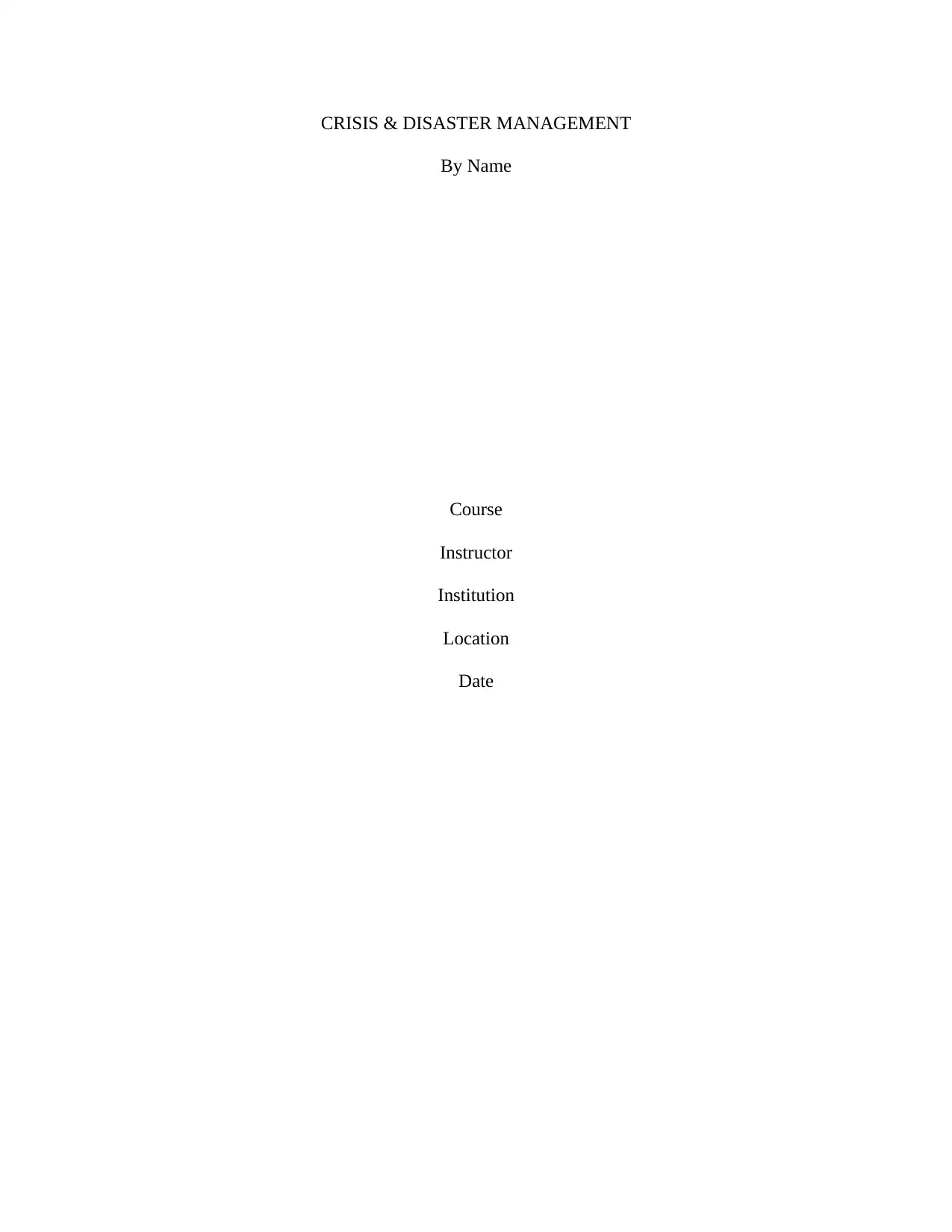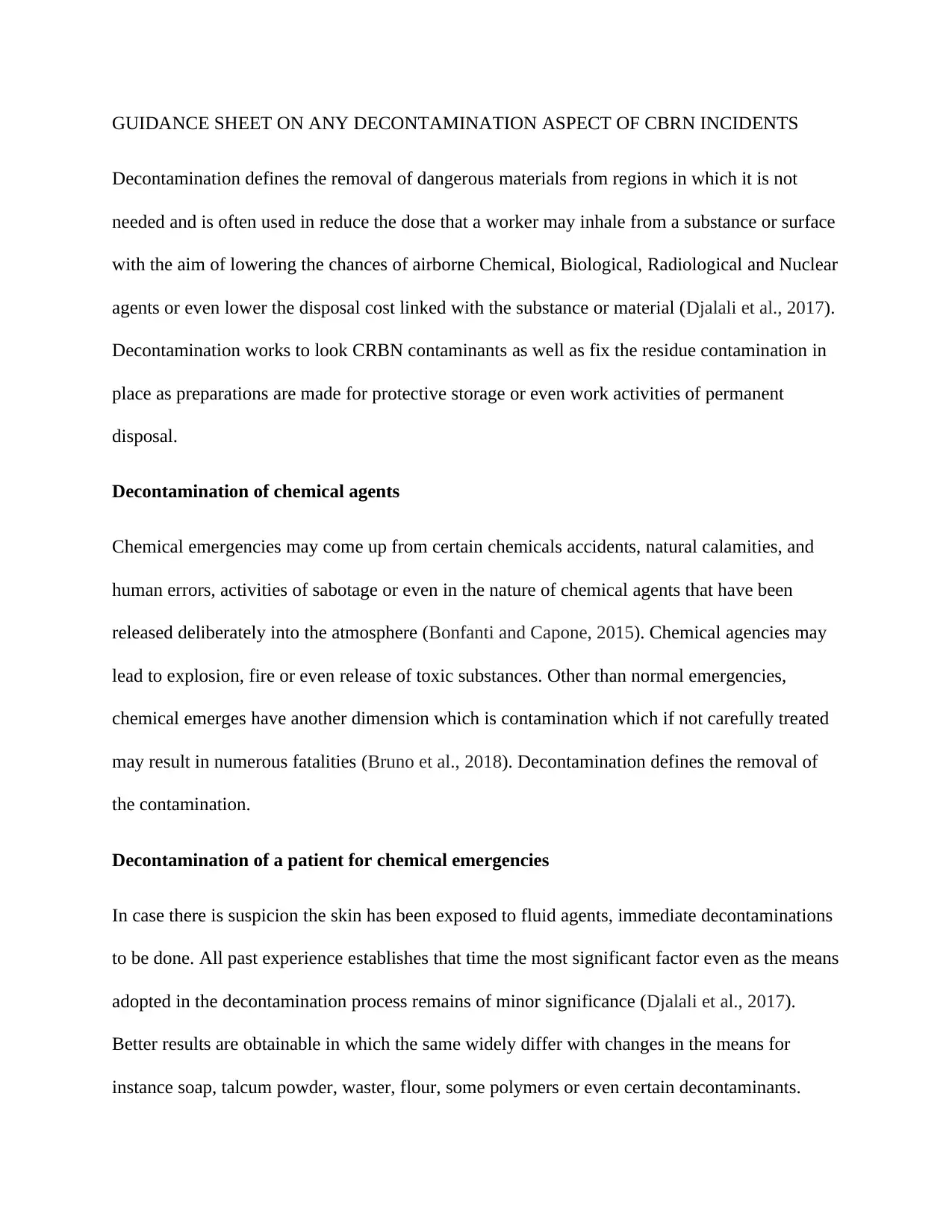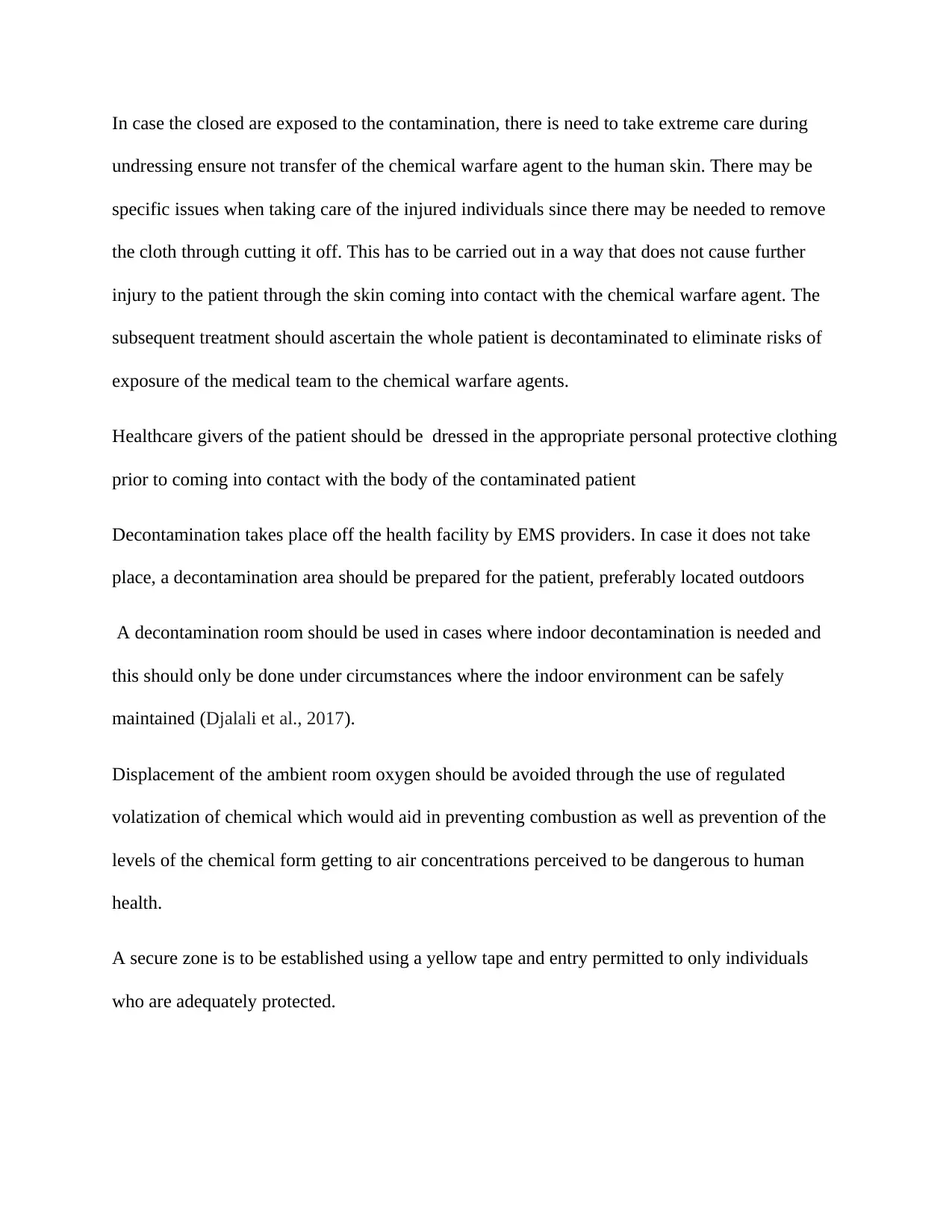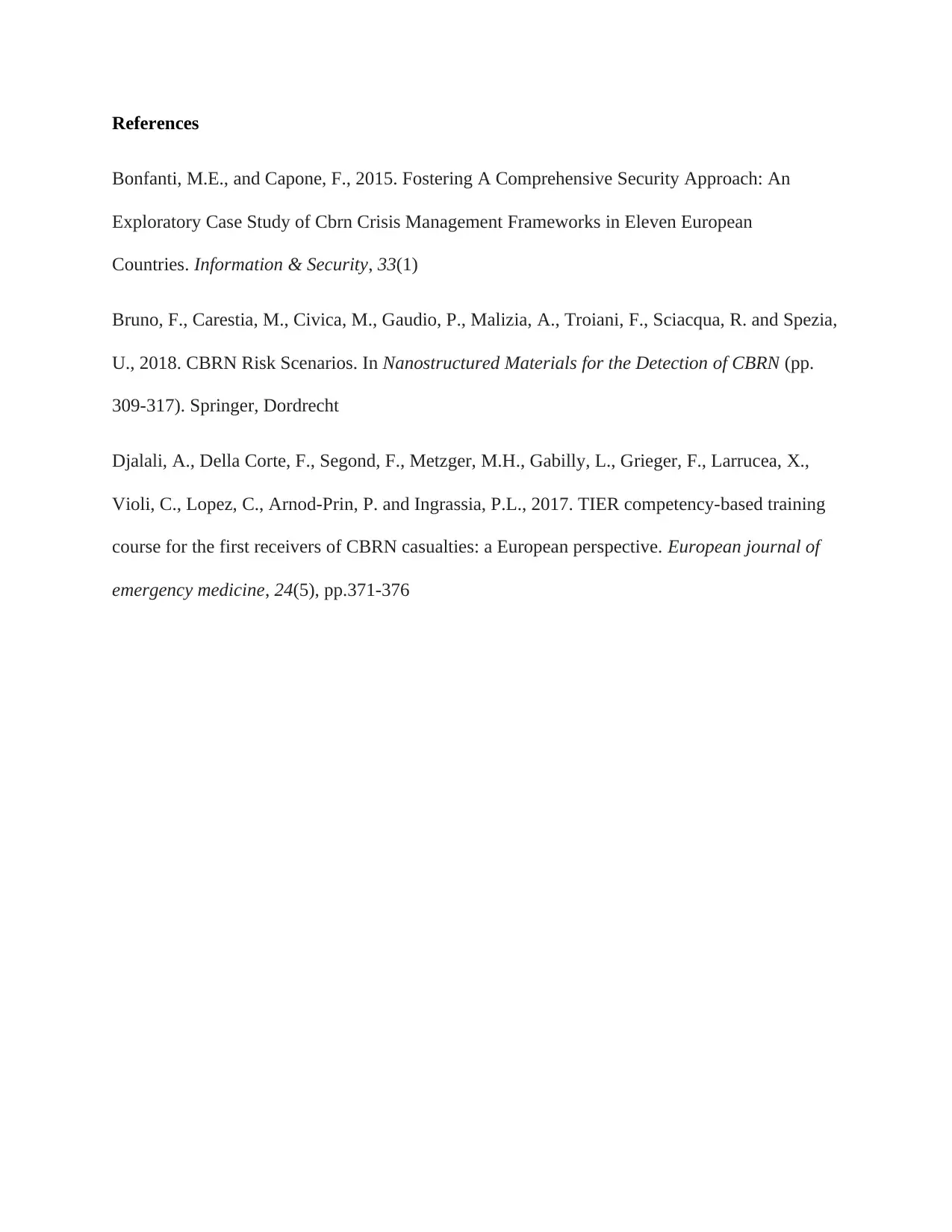Operational Guidance Sheet: CBRN Incident Decontamination Principles
VerifiedAdded on 2023/03/31
|5
|693
|210
Report
AI Summary
This report provides an operational guidance sheet for disaster managers dealing with CBRN (Chemical, Biological, Radiological, and Nuclear) incidents, focusing on the critical aspect of decontamination. The guidance emphasizes the removal of dangerous materials to reduce exposure and potential harm. It details the decontamination process for chemical agents, highlighting the importance of immediate action and the significance of time. The report outlines steps for patient decontamination, including careful undressing to prevent further contamination, and the importance of healthcare providers wearing appropriate protective clothing. It stresses the need for a designated decontamination area, preferably outdoors, and provides guidelines for indoor decontamination rooms to prevent oxygen displacement. The report concludes by emphasizing that following these guidelines will improve the safety of patients and those assisting them.
1 out of 5












![[object Object]](/_next/static/media/star-bottom.7253800d.svg)